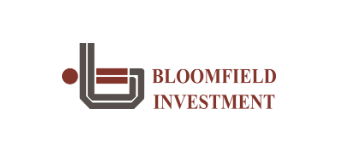Bloomfield mandate anchors CFA sovereign price discovery
Cameroon appoints Bloomfield for its first local-currency sovereign rating, signaling deeper CFA-bond market reform. Track BZ=F and EMB as oil prices and frontier spreads test whether CFA yields compress sustainably by mid-2026.

Cameroon has appointed Bloomfield Investment Corporation to produce its first local-currency sovereign credit rating, marking a structural shift in how risk is priced in CFA-denominated debt. The initiative aims to deepen liquidity, improve monetary transmission, and reduce dependence on external benchmarks as the CEMAC region’s financial architecture matures. The move follows tighter global conditions that have raised Cameroon’s external borrowing costs.
The country’s 2032 eurobond trades around 9.8–10.2% yield, while one-year Treasury bills in local currency carry nominal yields near 6.4%. Public debt is about 48% of GDP, the overall fiscal deficit hovers near 3.5% of GDP, and nominal GDP is roughly USD 50 billion. Inflation has eased to about 4% in 2025, down from 5% a year earlier, as food prices stabilize.
The absence of a credible local-currency rating has long compressed term premia and blurred the line between liquidity and credit risk. Investors in CFA debt have priced securities through institutional trust rather than sovereign fundamentals, leaving the yield curve shallow and largely policy-driven. A formal rating changes that dynamic by introducing a transparent reference point for risk assessment.
It enables investors to distinguish between creditworthiness and liquidity conditions, which in turn should steepen the curve and improve duration pricing across two- to ten-year maturities. The initiative also aligns with BEAC’s goal of strengthening the collateral base for interbank repos, enhancing the effectiveness of its policy corridor and fostering a more market-driven transmission channel.
The fiscal impact could be material over time. Cameroon’s gross financing requirement, including amortizations, is in the mid-single digits of GDP in 2025. If the rating leads to a 50–75 basis-point compression in local yields, the government can shift part of its funding from foreign to domestic markets while keeping interest costs stable. A 60-basis-point decline on CFA 1 trillion of domestic issuance would reduce annual interest expense by about CFA 6 billion, or roughly 0.1% of revenue.
Lower local yields could also facilitate longer-dated issuance and attract insurance and pension funds, gradually reducing banks’ concentration in sovereign paper. Over the medium term, that diversification can moderate systemic risk in a market where banks still hold roughly a third of government securities.
Institutionally, the rating enhances transparency and supports regional financial integration. BVMAC’s combined sovereign and corporate bond listings stand at about CFA 6 trillion, but liquidity remains thin and secondary turnover negligible. A standardized rating methodology will allow asset managers to create benchmarked products and enable BEAC to calibrate repo haircuts using observable risk metrics. If successful, the framework could serve as a pilot for Gabon, Congo, and Chad, helping CEMAC build a layered credit market that no longer relies solely on eurobond pricing as the anchor for local yields.
Investors will assess execution quality closely. The credibility of the issuer-paid model hinges on methodological independence and full disclosure of fiscal data, including arrears and contingent liabilities. Transparency will determine whether the rating compresses yields or instead widens them if markets suspect political influence. Domestic investors—mainly banks and institutional funds—will look for detailed sub-scores on fiscal strength, external buffers, and governance. For international holders, improved data reliability could re-price the sovereign’s local curve without altering the eurobond trajectory, which remains primarily tied to global risk appetite and oil trends. Brent front-month (BZ=F) near USD 80 per barrel still supports export revenues and FX liquidity, while frontier hard-currency spreads tracked by EMB remain sensitive to U.S. rate moves and commodity sentiment.
Risks center on disclosure and implementation. If fiscal data gaps persist or the methodology proves opaque, investors may discount the rating entirely, leaving the curve unresponsive. A global rates shock or sharp commodity downturn would override domestic improvements, keeping external spreads elevated and limiting the government’s refinancing options. However, if the rating is credible, it can anchor a genuine domestic benchmark that gradually narrows Cameroon’s risk premium and strengthens the fiscal-monetary feedback loop within the CFA zone.
Forward indicators will confirm success by mid-2026. A credible publication of Bloomfield’s sovereign scorecard, a 30–80 basis-point compression in two- to five-year CFA yields versus late-2025 levels, and domestic issuance covering at least 25–30% of total gross financing needs without reducing average maturity would demonstrate durable reform traction. If BZ=F holds between USD 75–85 and EMB stabilizes, Cameroon’s cost of capital could decline sustainably while reinforcing market discipline across CEMAC.





